At any operating system, including Windows 10, errors occur during operation. The reasons for their appearance are different: errors on the part of the user (forcibly shutting down the computer during the update process), errors related to operation installed programserrors due to malfunction hard driveviral activity, etc. In fairness, it should be noted that, starting with Windows 7, Microsoft's operating systems have become more stable and easier to recover from crashes. More and more users are installing the system partition on the SSD, which is compared to hard drive (HDD) increases reliability and speed work windows. How to check Windows 10 for errors - this will be discussed in this article.
How to independently check Windows 10 for errors and fix them
Use the method below to check Windows 10 for errors. We will not use third-party utilities, but we will use the tools that Microsoft offers us to check. We trust the system developers - they know better how Windows works, what problems it may have and how best to fix the problems that have arisen.
How to find SFC utility errors in Windows 10
SFC Utility is a command known to computer specialists who checks system files, detects damaged files and restores them if necessary. To run it, run command line (as administrator) and enter the sfc / scannow command  . Be sure to wait until the work is completed.
. Be sure to wait until the work is completed.
If everything is in order, the check will end without errors or with a message about fixing them; otherwise, if a message appears about the detected errors in the system files (for example, the Windows Resource Protection Program has detected damaged files, but cannot restore some of them), you will need to use another utility.
DISM Helps User Test Windows 10
Windows 10 includes a useful recovery utility, DISM. Before using it, restart your computer, turn off external drives data (flash drives, external drives, memory cards), shut down programs that have autorun (including Anti-Virus). You can check the programs that are still working, for example, through the "Task Manager" and, if detected, terminate their work there. Make sure that you are connected to the Internet and the computer does not go into sleep mode when the user is inactive hard disks Do not turn off to save electrical energy.
Run the command line again as Administrator and enter the command: DISM.exe / Online / Cleanup-image / ScanHealth. Getting started application: 
Be patient and wait for the results of the program check. At the end, you may receive a message that “the component storage is to be restored” 
in this case, enter the command: DISM.exe / Online / Cleanup-image / RestoreHealth
From the names you can understand that in the first case we checked the system installed on the disk, and now we are restoring it.
At the end of the work, you will receive the message "Recovery was successful."
If the work of DISM in the first stage revealed critical errorsthat cannot be fixed, the best solution would be reinstalling windows. Before doing this, make sure that your hDD in order, for example, using the CristalDiskInfo or Victoria program - they scan SMART - service information that the disk stores about its work, and the command chkdsk running from the command line (on behalf of the administrator) will check and fix possible mistakes drive.
Windows? Checking the integrity of Windows 10/8/7 / XP is necessary if you suspect that some of the system partitions have changed or been damaged due to malware.
Several tools are available to verify integrity. windows files 10. The most common is SFC.exe, DISM.exe is often used. You can also use the Repair-WindowsImage function executed in PowerShell. We recommend using several methods, but in turn. This is necessary because each of the options will check the integrity of different files. If you need to perform such a procedure, but do not know how to check the integrity system files Windows 10 is correct in order to correct them, resume work, carefully read the recommendations below, follow the sequential steps, then you can check, restore the integrity of the system files of Windows 10 and other versions.
Check the status of system files using Windows tools
SCF Scan
Many users use the sfc / scannow command to scan the operating system before restoring lost, damaged files, which is performed with the aim of their correct functioning, resuming trouble-free operation, and troubleshooting through the recovery of damaged components. offline examines and fixes the system partitions of Windows 10.
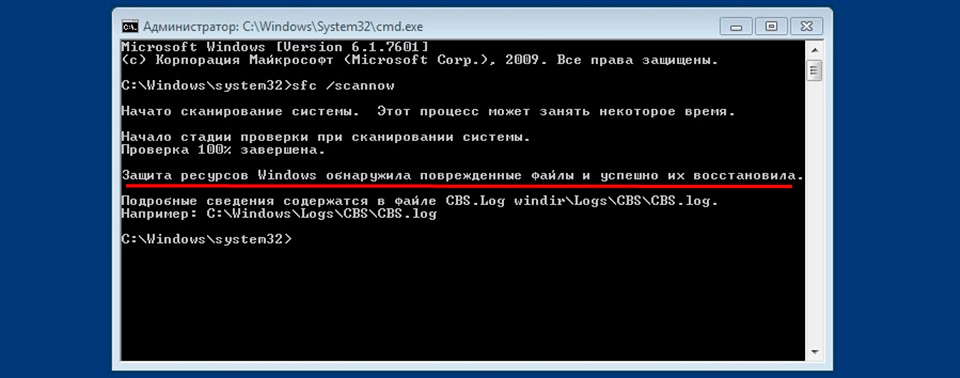
- To activate this command, first open CMD, start with administrator rights. You can activate the utility using the mouse, right-clicking on the main Start menu, then selecting “Command Prompt” in the list. In the dialog box, type sfc / scannow, press Enter.
- A check will be started, defects will be revealed, then they will begin to be corrected without your intervention, assistance automatically, by the system itself. If no errors were found, you will be informed that there are no problems detected by OS resource protection.
- If you decide to check any one defined from the system files, then specify scf / scanfile \u003d "file path" on the command line.
- It should be noted that SCF is not able to correct the errors of those partitions that were running at the time of scanning, so it is best to use SFC only when starting the "Restore Windows 10 environment".
Starting SFC Using Recovery Environment
To activate SCF correctly, follow the steps below the described algorithm.

After carrying out the above steps, a list of volumes will appear, you need to remember or write down the letters that correspond to the system partition and the “Reserved by system” drive.
sfc / / scannow / offbootdir \u003d bootloader section letter: \\ / offwindir \u003d E: \\ Windows (or your path to the Windows 10 directory).
As a result, a scan should start, checking the integrity of the system files, recovery will be available for all of them. Note that the check will take quite a considerable amount of time; you do not need to turn off or restart the computer during the entire procedure. Last action will need to be executed only when the scan is complete and you close the command line.
Scan Using DISM.exe
The specified utility is used to mount images, it makes it possible to identify and fix problems that arise with OS partitions as a result of their damage, and perform recovery. It is perfect for those sections that the SFC could not handle. It can also be used if the SFC could not detect any problems during the scan. Therefore, do not limit yourself to only one type of scanning and treatment of damaged areas, be sure to carry out this operation when working with system components.
To run DISM.exe, the command line is also used. Activate it from the administrator and then follow the steps:
- dism / Online / Cleanup-Image / CheckHealth - this function provides information on what defects are there, damage to various components of Windows 10. An in-depth check, however, is not performed, only previously found data is used.
- dism / Online / Cleanup-Image / ScanHealth - scan for possible damage to the component storage. This check often requires enough time, periodically freezing during the implementation process (usually by 20%).
- dism / Online / Cleanup-Image / RestoreHealth - a thorough inspection and recreation of system files offline, recovery, which also takes a long time.
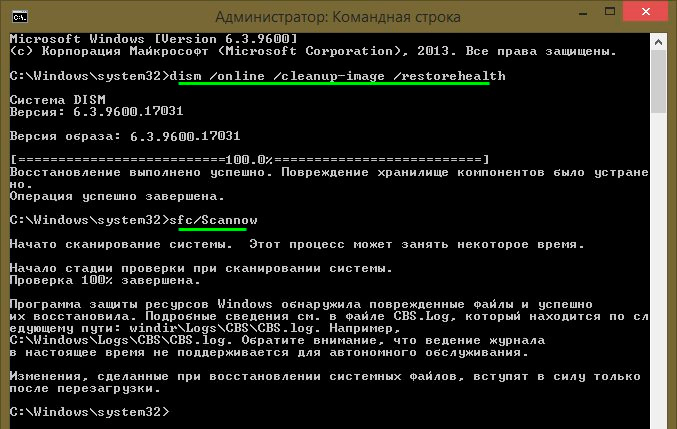
All action logs during the execution of the above commands are recorded on the path Windows \\ Logs \\ CBS \\ CBS.log, Windows \\ Logs \\ DISM \\ dism.log
Like the previous utility, DISM is also launched through mode recovery windows 10.
Checking the integrity of system files in Windows 7/8 is identical to the same operation in the 10th. It is carried out similarly - through the command line via SFC and the corresponding command. All actions are performed in the same sequence as described previously. A similar algorithm checks the integrity of system files in Windows XP. The start of the command line interpreter is as follows:
- go to the "Start" menu;
- click on the “Run” option;
- in the dialog box, type the command "cmd", then on the keyboard Enter.
As a result, the usual command line opens, you can perform all the steps to check the OS files for defects.
All of these operations will help restore damaged, damaged partitions of any Windows-class operating system, which will solve the problems of malware interference in the computer, will return speed to its work, and avoid extreme measures, such as full recovery systems for malfunctions. You do not need to reinstall the entire OS, just restore the damaged components. Identify them using special commands and utilities, and your computer will continue to work.
From operating room errors windows system 10 no user is insured. They can arise due to his deliberate or accidental interference in the OS, as well as through the fault of third-party applications. If the operating system starts complaining about the lack of files, registry errors or the inability to read items from windows folders, you will need to check the integrity of its components.
The Windows 10 operating system provides 2 methods for analyzing file integrity - through the SFC.exe and DISM.exe tools. Commands do not replace each other, but complement, checking various system libraries for file integrity. That is why it is recommended to perform not one of them, but both. The tools will allow you to check the integrity of Windows 10 files and replace damaged or modified with original elements.
Important: If previously a computer user made appropriate changes to the system files of the operating system, they will be canceled. Windows Tools replace the changed elements with the original ones, even if the problem in the computer or application is not caused by their actions.
How to check file integrity in Windows 10 using SFC
It is recommended to start checking the integrity of the operating system files with the SFC command. It allows you to find errors in key files and fix them. You can perform a check using SFC both in the familiar Windows 10 interface via the command line and through the recovery environment, both of these methods are described below.
Via the command line in the Windows interface
It is better to start checking with SFC through the standard Windows interface using the command line. Most often this is enough. To check the integrity of the files, do the following:
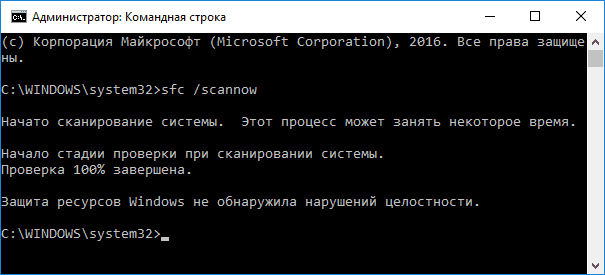
If there are no problems with the Windows system files, after checking the user will see a message that "Windows Resource Protection has not detected an integrity violation." In this situation, you can proceed to scan files using DISM.
However, in some situations, files that are responsible for displaying the Windows GUI may not work correctly, and their system will not be able to fix it, because they are active. In such cases, it is necessary to check the SFC through the recovery environment, which does not require loading a graphical interface and is able to work with these files, as well as modify them if necessary.
Please note that if you suspect that a system malfunction is associated with a specific file, you may not need to perform a full SFC check. Just enter the command sfc / scanfile \u003d ”address to file”, and it will be replaced instantly with the original version if changes have been made to it previously or if it works with an error.
Through recovery environment
To verify file integrity using the SFC command through the recovery environment, you will need to perform the following steps:
Click on the "Start" button in the lower left corner and go to "Settings":
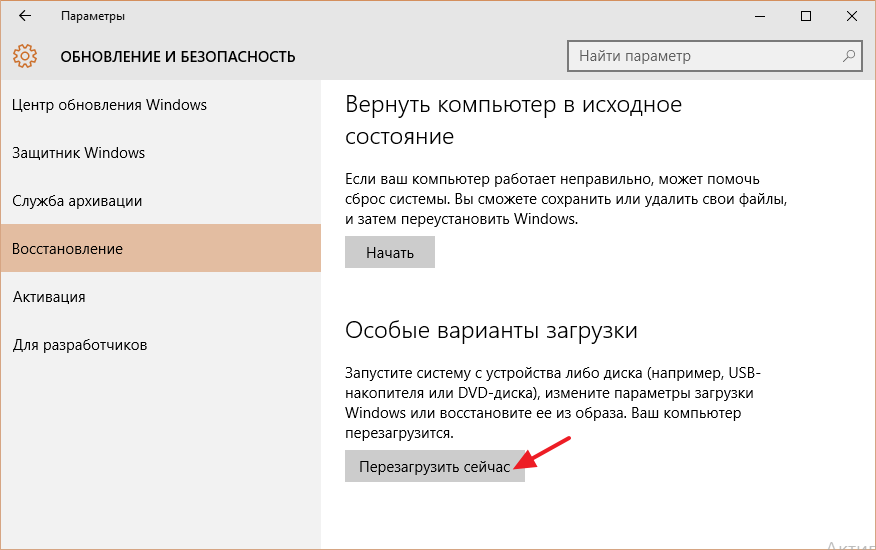 diskpart list volume
diskpart list volume After the second command is executed, a list of available volumes will be displayed. Here you need to pay attention to the disk that is reserved by the system and the system partition with the operating system. Further, they will need to be manipulated. 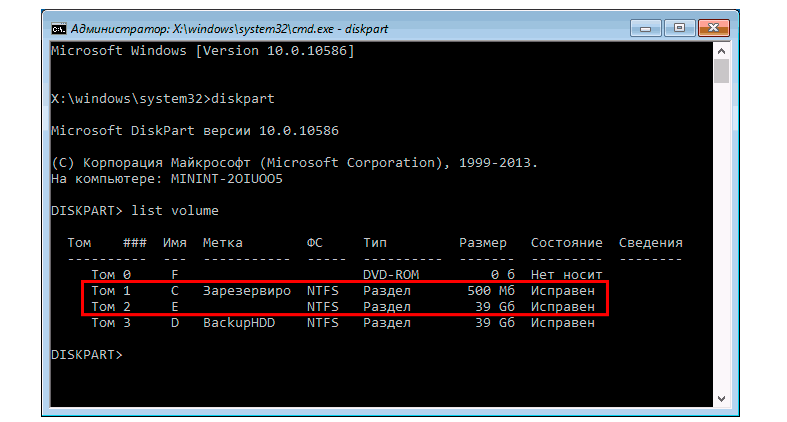
Continue to enter the commands:
Exit sfc / scannow / offbootdir \u003d C: \\ / offwindir \u003d E: \\ Windows
The last command requires you to specify the drives that were marked above. That is, in the example command example, drive C is the boot loader partition, and drive E is the place where Windows 10 is installed. 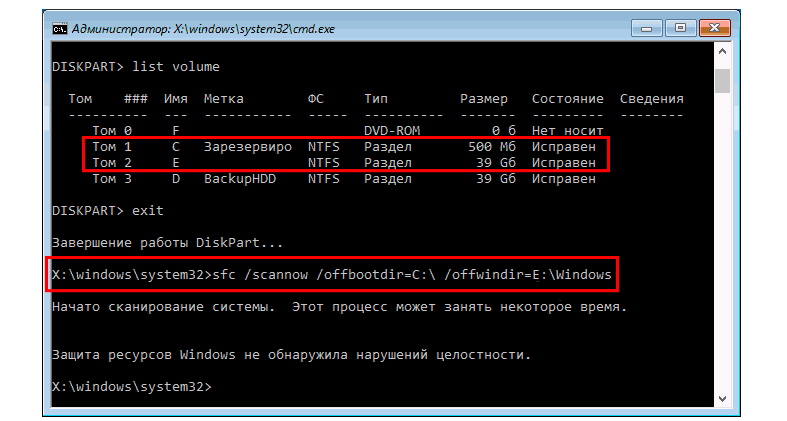
Attention: It is very likely that the drive letters will differ from the ones in the example, so the command will vary.
- After entering the last of four commands, scanning of the integrity of the operating system files will begin.
The advantage of working through the recovery environment is the ability of the SFC tool to replace the files that are needed to load the Windows GUI. The check in this case will last a little longer than when working through the command line in the operating system interface. In this graphically, the user command line in the recovery environment will not notify the speed of the process. You can determine that the computer is working properly and checking the integrity of the files is not hung up by the flashing underline icon.
At the end of the check, the user will see information that integrity violations were not detected or were successfully resolved. After that, you can proceed to the second verification method - using the DISM tool.
How to check file integrity in Windows 10 using DISM
As noted above, after checking with the SFC, it is recommended that you begin the system analysis with the DISM tool. During the scan, he examines other directories (and again “goes through” the files that were checked by SFC).
Testing with the DISM tool is slightly different from system analysis due to SFC. The user has the opportunity to choose one of three teams to conduct a system check. Each of them has a different level of exposure.
Dism / Online / Cleanup-Image / CheckHealth
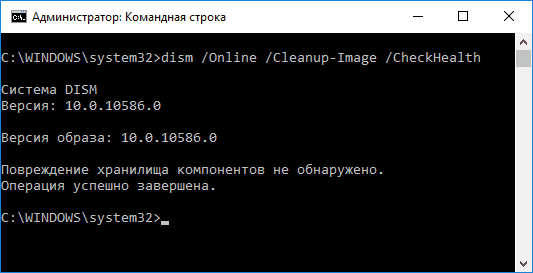
When this command is executed, the system checks the entries made by the diagnostic utilities to detect changes or problem files in the system. The command is executed quickly, but no verification is performed, and all data is based on previously recorded information.
Dism / Online / Cleanup-Image / ScanHealth
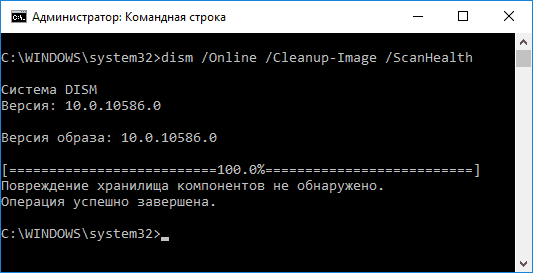
This command is aimed at analyzing all system components to identify errors and damaged elements in them. In this case, only a check is carried out, and the user is notified of the presence or absence of problem files. Such a check may take from several minutes to several hours, depending on the speed hard work disk, its load and the degree of interference in the files of the operating system.
Dism / Online / Cleanup-Image / RestoreHealth
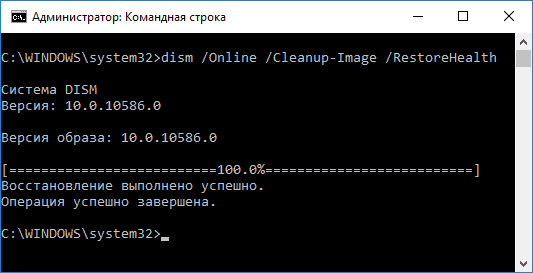
This command, unlike the previous one, not only checks files, but immediately replaces them with integral ones. It will also take from several minutes to several hours to complete.
Important: Please note that the last two commands that run the Windows 10 file integrity check may freeze during execution at a certain percentage (most often around 20). In no case should you restart the system at this moment, since this situation is typical, and the percentages will continue to “drop” after a while.
Despite the fact that there are many programs for determining errors in the Windows operating system, you can check the top ten for malfunctions simple ways without using software.
Ways to Check Windows 10 for Errors
There are several standard utilities in the Windows 10 operating system, thanks to which you can not only determine the error, but also fix it. Let's consider each of them.
The first is chkdsk. It is designed to scan the disk and its sectors for errors. The utility works only with hard drives that are formatted in FAT32 and NTFS format. New file systems not yet available for this firmware. For launch chkdsk we do the following:
- Click "Start", "Command Prompt (Administrator)."
- Enter the command "chkdsk C: / F / R", where C is the letter system disk. However, if you run a test drive that is currently used by the system, the utility will fail. Therefore, this command can check drive D.
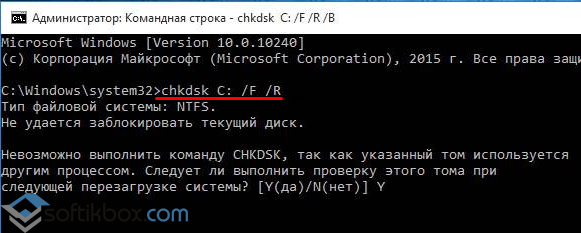
- But, if you need to perform a system check, press "Y". After rebooting the system, a PC check starts.
- To see the scan results, press “Win \u200b\u200b+ R” and enter “msc”.
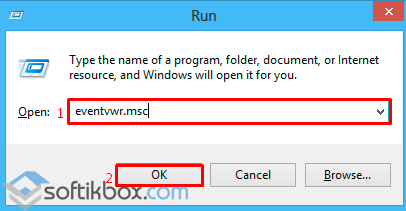
- An event window will open. Go to the "Application" section and enter "chkdsk" into the search.
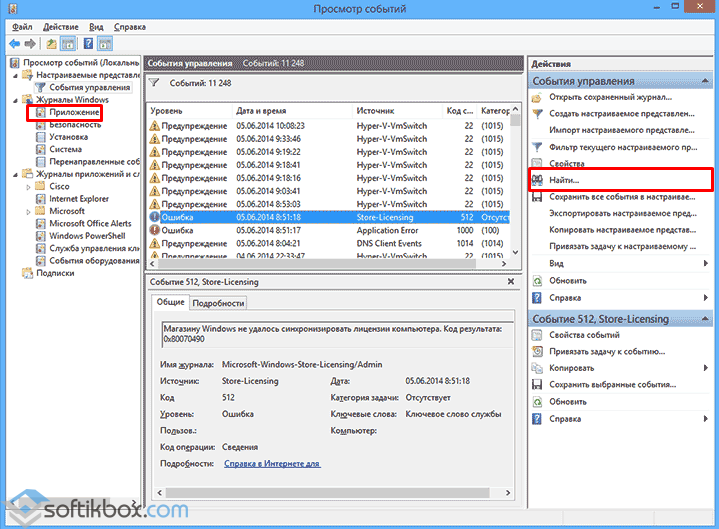
- We look at the scan results.
You can also check the drive in Windows 10 using Explorer. To do this, do the following:
- Open Explorer. Select the disk and click on it with the right mouse button. Select "Properties". A new window will open.
- Go to the “Service” tab and click “Check”.
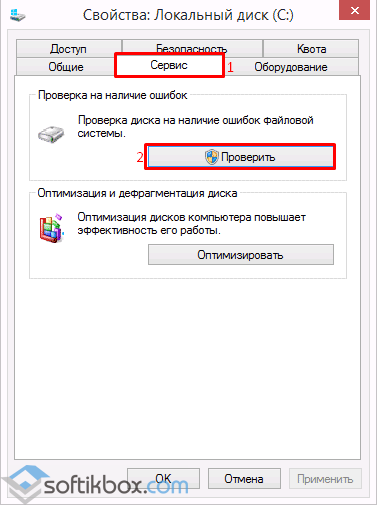
To check system files for errors in Windows 10, the "sfc / scannow" command is intended. It checks and repairs system files that have been damaged in various circumstances.
To run the utility, you must open a command prompt with administrator rights, enter “sfc / scannow” and wait for the scan results.
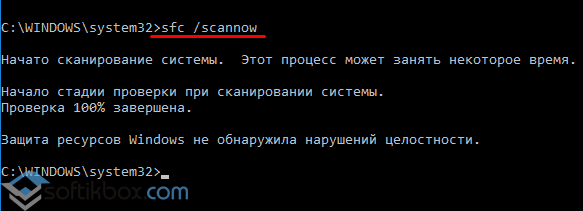
If this command cannot be executed, it can be run in safe mode or with installation disk. To do this, do the following:
- Reboot the computer in safe mode;
- Select the "Diagnostics" section.

- In the next window, click on the "Advanced Settings" section.

- In the "Advanced Options" select "Command Prompt".
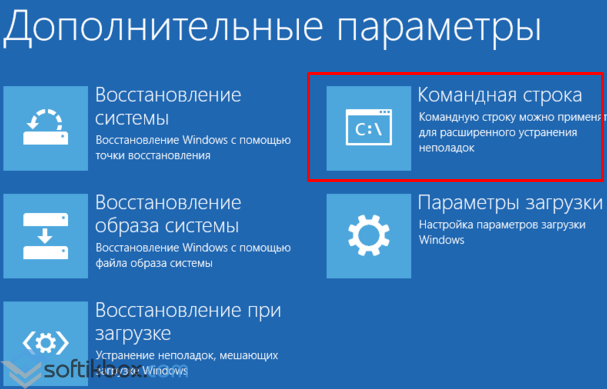
- The console will open. In order of priority, we enter the following commands: “diskpart” and “list volume”.
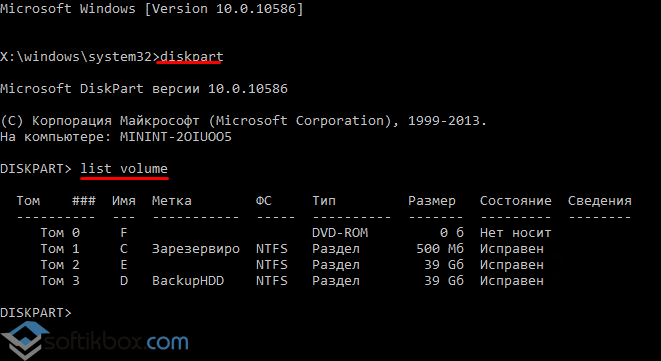
- Here you need to select and remember the system partition and reserved by the system.
- Enter exit.
- We set the command to scan: "sfc / scannow / offbootdir \u003d C: \\ / offwindir \u003d E: \\ Windows", where C is the system partition and E is the address of the folder with Windows 10.

If using the “sfc / scannow” command it was not possible to fix errors in Windows 10, it is worth using the “DISM.exe” utility.
- Run the command line with administrator rights and enter “dism / Online / Cleanup-Image / CheckHealth” to check the disk for errors.
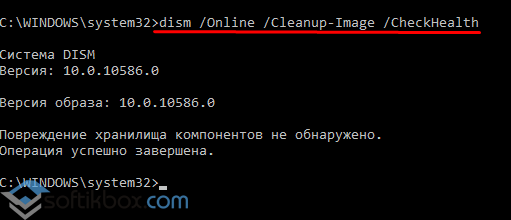
- To check the integrity of the storage files, we set the command “dism / Online / Cleanup-Image / ScanHealth”.
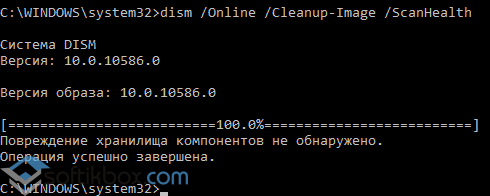
- If errors were found, enter “dism / Online / Cleanup-Image / RestoreHealth”.

- You can find the report log at the address “Windows”, “Logs”, “DISM”, “log”.
The same commands can be used to edit the registry. Errors will be corrected correctly.




